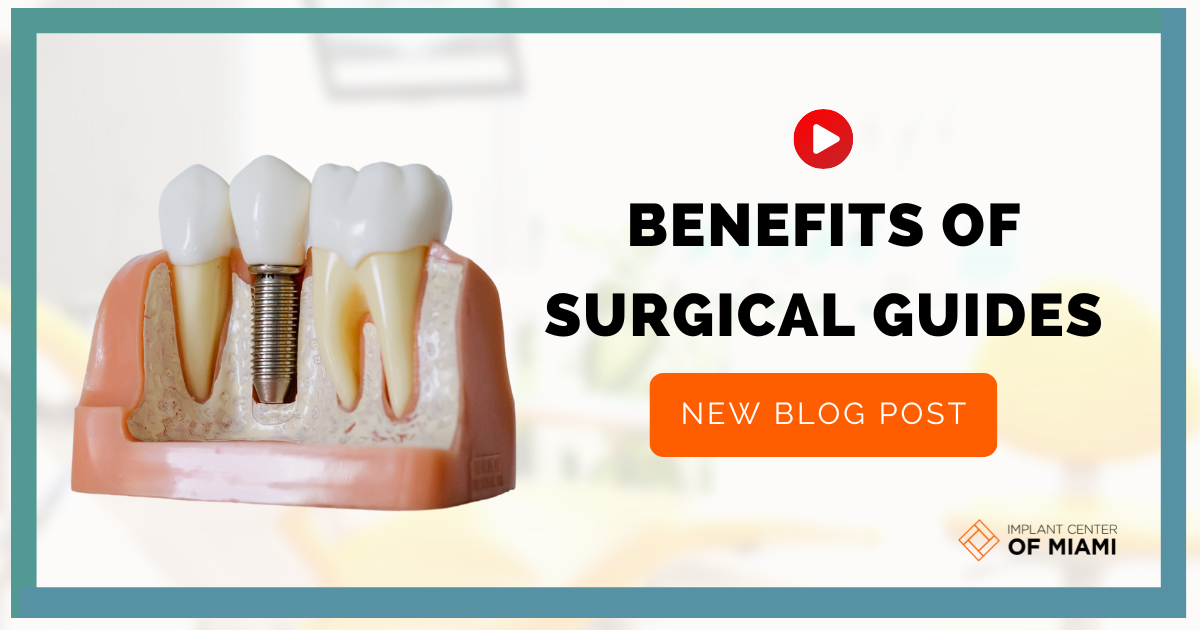Transforming Dental Practices: Extensive Insight into the Use of Robotic Surgery in Dentistry
The field of dentistry is continuously evolving, and one of the ground-breaking innovations has been the introduction of robotic surgery. This advanced technology has revolutionized dental procedures, offering a higher level of precision and control than ever before. Robotic surgery in dentistry improves the accuracy of invasive procedures, reduces human error, and often leads to quicker recovery times for patients. The impact of this technological advancement is significant, transforming dental surgical procedures and redefining the standards of patient care in the dental world.
Request an Appointment
Introduction to Robotic Surgery in Dentistry
Robotic Surgery in dentistry revolutionizes oral procedures by enhancing precision and control. It includes robots guided by dental professionals for tasks like tooth extraction and implantation. This technology minimizes human error, boosts efficient surgical outcomes, reduces pain, and accelerates healing time. Essentially, it's transforming dental surgery.
Historical Context of Robotic Dental Surgery
Robotic dental surgery emerged from advancements in both medicine and technology. It combines precise robotic systems with digital imaging, resulting in more accurate dental procedures. The groundwork for this innovation began in the late 20th century with the advent of medical robotics and CAD/CAM dentistry, ushering in a new age of surgical ambient intelligence.
The Prospect of Precision in Dental Procedures with Robotic Surgery
Robotic surgery offers remarkable precision in dental procedures, potentially enhancing patient care. It enables highly accurate, minimally invasive interventions, lowering risks like infections and post-surgery complications. Hence, with robotic surgery, the future of dentistry shines bright.
Types of Robotic Systems used in Dentistry
Dentistry utilizes robotic systems for precision and efficiency. In envisioning surgeries, Simodont Dental Trainers are used. For implants, the Yomi Robotic System is employed. Robotic systems like Neocis Inc. address oral surgeries. Thus, robotics revolutionize dental procedures.
Patient Experience with Robotic Dental Surgery
Robotic Dental Surgery elevates patient experiences by offering precision, comfort, and quicker recovery. The technology minimizes manual errors, resulting in highly accurate results. Its efficiency often reduces operation and healing time, alleviating patient anxiety and discomfort.
Benefits of Robotic Surgery in Dentistry
Robotic Surgery in Dentistry enhances precision, improves patient comfort and accelerates recovery time. It offers superior 3D visuals ensuring precise incisions and reduces chances of human error notably. It also minimizes invasive procedures and reduces clinic visits, making it a preferred choice.
Disadvantages and Challenges of Robotic Surgery in Dentistry
Robotic surgery in dentistry presents several challenges, such as high costs and lengthy training for specialists. Its complex setup can add time to surgical procedures. Furthermore, it relies heavily on technology, and any technical failures could lead to severe consequences.
Robotic Surgery in Orthodontics: A Future Perspective
Robotic surgery in orthodontics promises precision, efficiency, and reduced trauma. With advancements like 3D imaging and artificial intelligence, it offers the potential for personalized treatment plans. This technology may revolutionize orthodontics, ensuring faster recovery and improved outcomes.
Role of Robotic Surgery in Periodontology
Robotic surgery is revolutionizing periodontology, enhancing precision and minimizing invasive procedures. It helps in detailed planning, accurate implant placement, and reduces recovery time. The advanced technology and 3D imaging offer improved patient care and outcomes in periodontal surgery.
The Use of Robotic Surgery in Teeth Removal Procedures
Robotic surgery is gaining traction in dental procedures like teeth removal. Its advanced precision reduces trauma and speeds up recovery. Surgeons control robots to perform meticulous extractions, minimizing damage to surrounding tissue. This technology enhances patient comfort and improves outcomes.
Training Requirements for Dentists in Robotics
Dentists need specialized training in robotics to effectively use modern tools. This includes learning about robotic surgical systems, controlling robotic arms, image guidance technologies, and programming robots. Continuing education is also crucial for staying updated on advancements.
Latest Technological Developments in the field of Robotic Surgeries
Robotic surgeries are advancing remarkably with new technology. The latest developments include improved precision and control, providing surgeons with enhanced capabilities. Robotics now feature 3D, high-definition vision and increased dexterity. Further advancements include AI integration, aiding in preoperative planning and real-time decision making. This evolving technology promises a future of minimally invasive surgeries, short recovery time, and better patient outcomes.
Financial Aspects and Cost-effectiveness of Robotic Dental Surgery
Robotic Dental Surgery combines advanced technology to enhance precision and efficiency in dental care. It assures optimal patient safety, reduces the manual intervention, thus cutting down the surgery times. Its cost-effectiveness comes through faster recovery, minimal hospital stays, and less post-operative complications, despite being pricy upfront.
Impact on Dental Practice: Adoption of Robotic Surgery
Adopting robotic surgery in dental practice significantly enhances precision, reduces human error, and accelerates recovery time. It allows dentists to perform complex procedures minimally invasively. However, it imposes high costs and requires comprehensive training, potentially limiting its adoption.
Comparing Traditional Surgery and Robotic Surgery in Dentistry
Traditional dental surgery, involving manual precision by a dentist, has been trusted for years and is often less expensive. However, robotic surgery in dentistry, though usually costlier, offers higher accuracy, less invasiveness, possibly reducing healing time. These high-tech interventions can minimize human error, making dental procedures safer and more efficient.
Evaluating the Safety and Efficiency of Robotic Dental Surgery
Robotic dental surgery has been evaluated for safety and efficiency, gaining noteworthy findings. It minimizes human error, heightens precision, and promotes faster recovery. However, costs and the robot's adaptability to all patients' anatomical differences are concerns. Despite these, studies have shown a successful safety record and enhanced efficiency, pointing to its potential role in modern dentistry.
Legal and Ethical Implications of Robotic Surgery in Dentistry
Robotic surgery in dentistry brings advancements but also legal and ethical implications. It raises questions about accountability if malpractice occurs - is it the programmer, robot manufacturer, or dentist who is liable? Ethically, patient consent, privacy, and ensuring the robot’s performance meets professional dental standards are vital.
Patient Case Studies and Success Stories of Robotic Dental Surgery
Robotic dental surgery offers varying benefits from improved precision to high success rates. Patient case studies reveal compelling successes, like precise implant placements and quicker recovery periods. Through robotics, dental procedures are revolutionized, leading to better experiences and outcomes.
Predictions and Trends for Robotic Surgery in Dentistry over the Next Decade
Over the next decade, robotic surgery in dentistry is predicted to increase tremendously. Advancements such as AI-driven automation, precision, and minimally invasive procedures will transform dental surgeries. Additionally, robots may facilitate remote surgeries, widening access to specialized dental care globally.
Conclusion: The Future of Dentistry and the Role of Robotics
The future of dentistry is poised to transform drastically, with robotics playing a key role. Incorporating robots can enhance precision and efficiency for procedures, from cleanings to complex surgeries. Robotics in dentistry may also improve patient comfort and outcomes while reducing treatment duration.
Final Thoughts: Summing up the Journey of Robotic Surgery in Dentistry
Robotic dentistry has marked a radical shift in dental surgeries, transforming the field with better precision, minimal invasiveness, and reduced recovery time. From its inception to the present day, it's been a journey of ceaseless innovation. With robot-assisted procedures offering enhanced accuracy and heightened patient comfort, the future of dentistry seems promisingly entwined with robotics.
Frequently Asked Questions
Dental Financing Options
Checking your options will not impact your credit score!
Apply Online in 30 Seconds
Fund Your Account
Start Your Treatment
Read Our Blog


Office Locations
Contact Us
For more information or to schedule an appointment, call us at 786-713-9290 or complete the form.
What Happens After I Send My Message?
Implant Center of Miami: Website Message
Locations Information
Our Services
Quick Links
Office Hours
- Mon - Fri
- -
- Sat - Sun
- Closed



